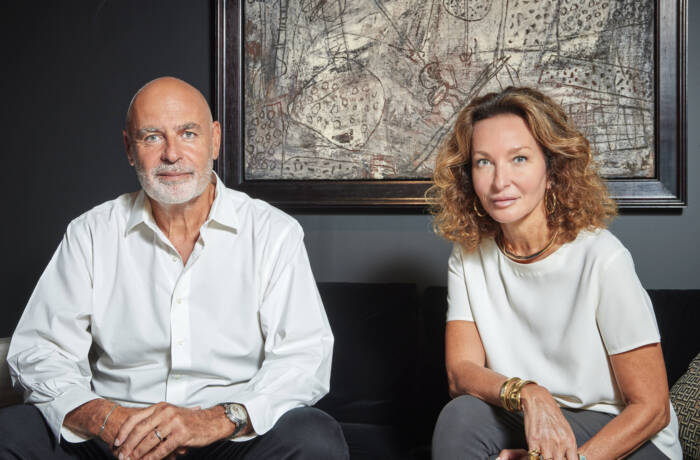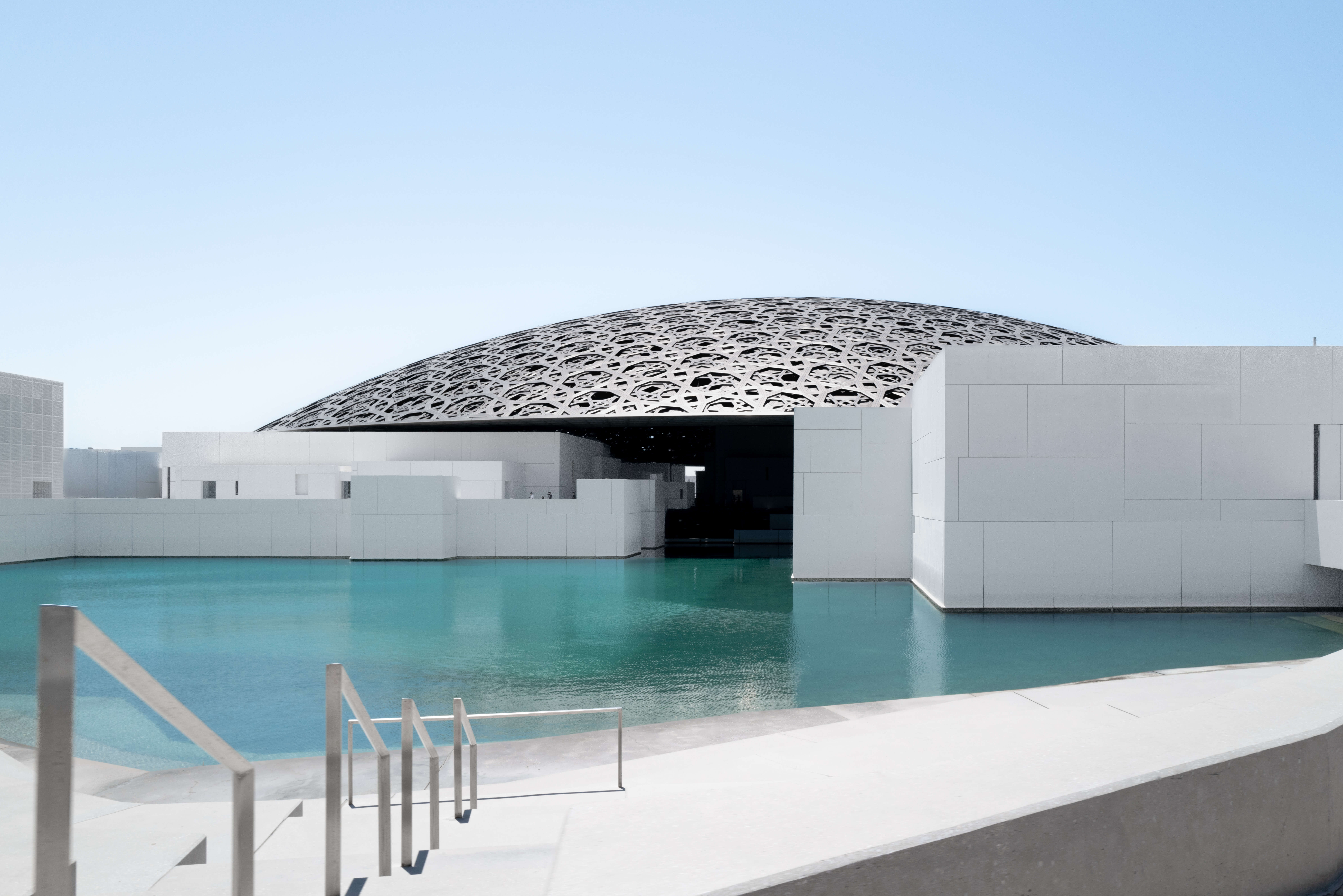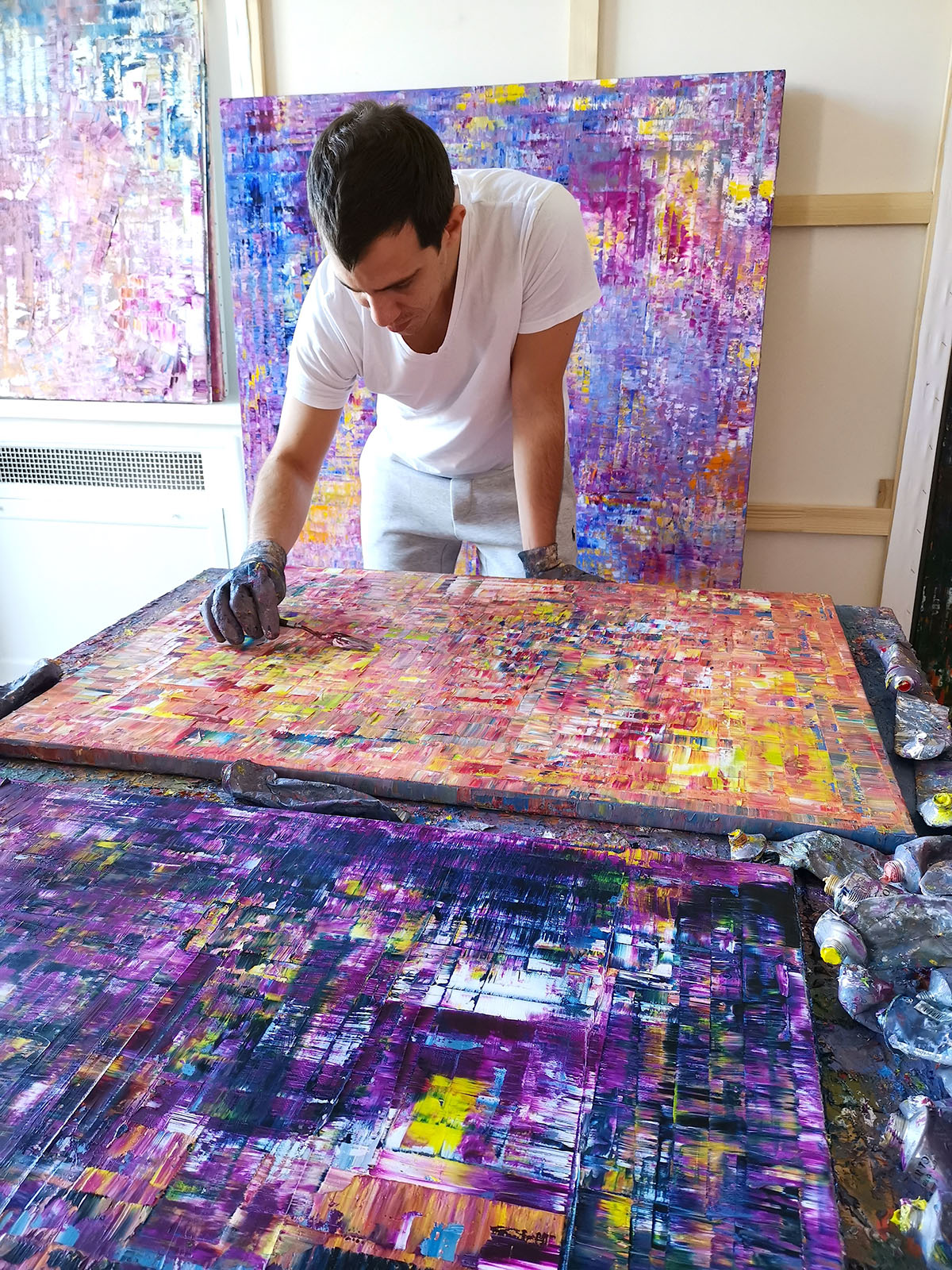
Sassan Behnam-Bakhtiar at work in his studio
Franco-Iranian artist Sassan Behnam-Bakhtiar, despite a childhood spent escaping war, then living in post- revolutionary Iran and enduring the subsequent prejudice, produces the most brilliantly coloured and life-affirming paintings. James Parry speaks with him ahead of his new exhibition in Düsseldorf
It’s an idyllic scene. Azure skies and an enticing ultramarine sea reaching out to the horizon and dotted with yachts, the perfect backdrop for a picture-postcard harbour town with cobbled streets lined with stylish shops and restaurants. Bougainvillea froths over historic façades and cicadas chirp in the beautifully manicured gardens of opulent villas. Welcome to the south of France, and to Saint-Jean-Cap-Ferrat. The artist Sassan Behnam-Bakhtiar has made his home here, following in the footsteps of artists such as Cézanne, Matisse, Chagall, Renoir and Picasso, all drawn to the French Riviera by the dramatic light, colours and stunning scenery.
Follow LUX on Instagram: the.official.lux.magazine
As bucolic as this may sound, in Behnam- Bakhtiar’s case, the Côte d’Azur provides welcome and creative sanctuary from a life that has not been without its challenges. Born in France in 1984 to Iranian parents who left their homeland after the Islamic Revolution, he would only visit Iran for a few weeks each summer to see family. But even such relatively brief trips could be fraught. For much of the 1980s Iran was engaged in a bitter war with Iraq, and Tehran was periodically targeted by Iraqi missiles. “It was terrifying,” remembers Behnam-Bakhtiar. “We could hear the rockets roaring overhead, and then the explosions.” On one occasion, he and his mother had to make a desperate dash to the city of Bandar Abbas to catch the last flight out of the country to safety in Europe.
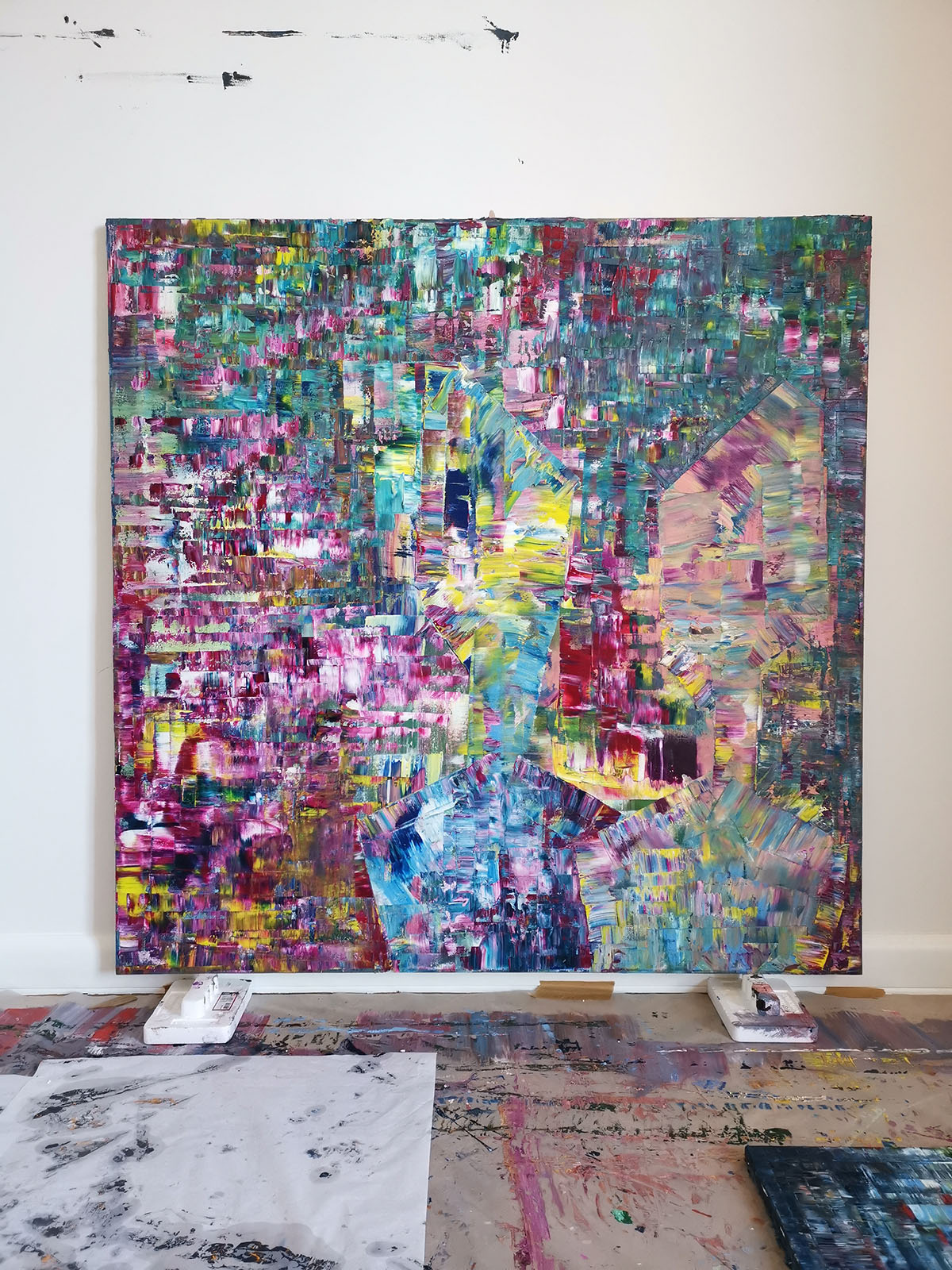
‘Lovers’ (2018) by Sassan Behnam-Bakhtiar
Further turmoil and trauma were to follow when, at the age of nine, Behnam-Bakhtiar moved to Iran permanently with his mother,to a world far removed from the childhood comforts of suburban Paris. He was a foreigner in a land deeply suspicious of the West. “At school they used to call me ‘the outsider’ and it wasn’t long before the verbal insults turned into actual physical violence,” he recalls.
The bullying came not only from his fellow pupils but also from the teachers, and continued outside of school, with intimidation and harassment from the police an almost daily occurrence. Behnam-Bakhtiar was singled out for being different, and because of his family’s history and role in the government prior to the Islamic revolution. Only by standing his ground and fighting his corner (literally, helped by taekwondo classes), did the unwelcome newcomer manage to get through each day. “At times it was pure darkness and not easy to focus on the potential light at the end of the tunnel,” he admits.
Read more: Karl-Friedrich Scheufele on Chopard’s partnership with Mille Miglia
But light there was, and Behnam-Bakhtiar will be focusing on the empowering aspects of such life experiences in his forthcoming exhibition ‘Extremis’, which opens at Setareh Gallery in Düsseldorf on 24 October. An evolution of his ‘Oneness Wholeness’ body of work, which wowed crowds last year at the Saatchi Gallery in London and at Jean Cocteau’s dramatically decorated Villa Santo Sospir on Cap Ferrat, the show will consist mostly of new works. “My new paintings reflect on what I learned from my difficult times in Iran and from life in general,” explains the artist. “By putting it out on the canvas, I’m saying that even in the toughest of situations, it’s always possible to learn and move forward towards becoming a more complete human being.”
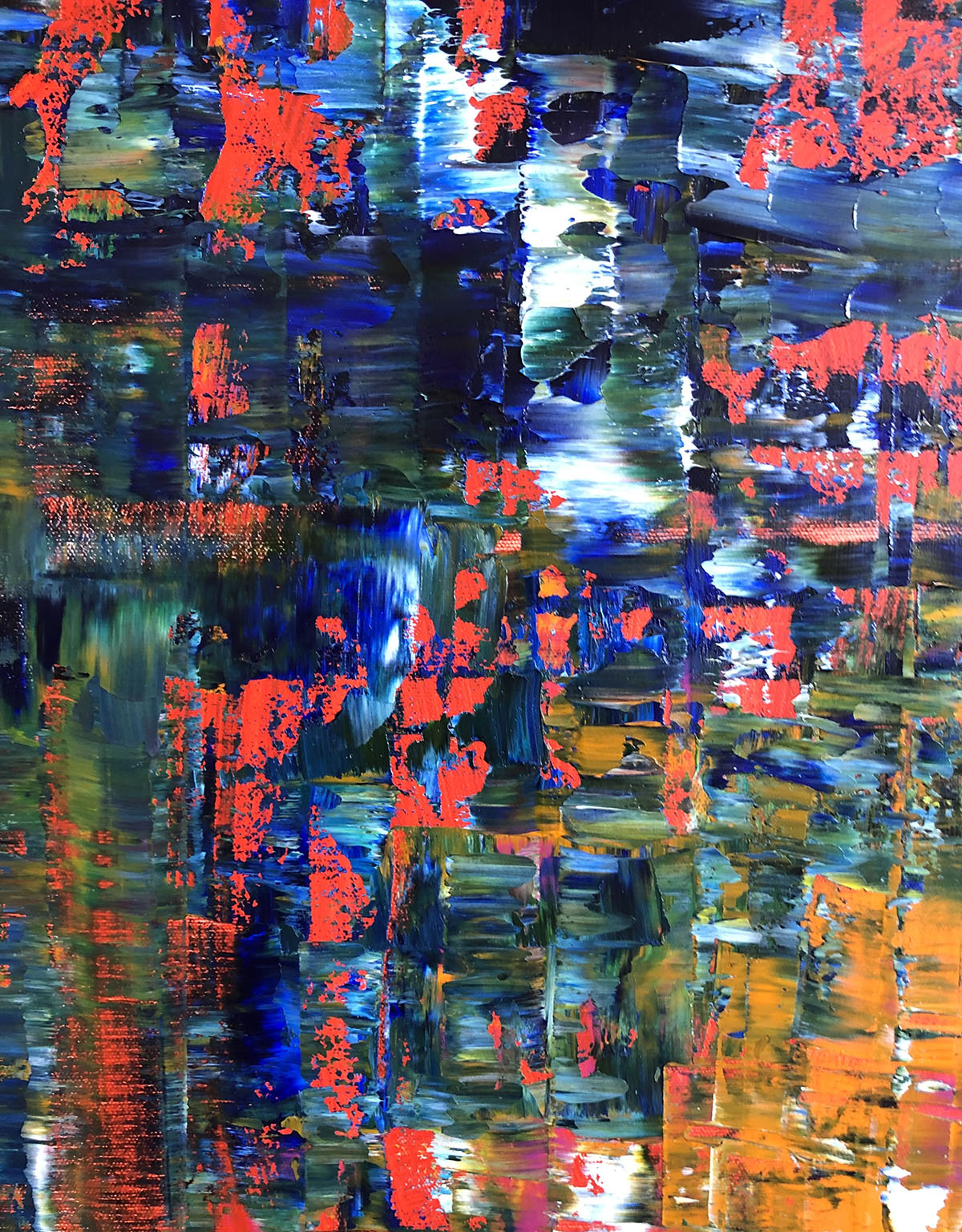
Detail of Sassan Behnam-Bakhtiar’s painting ‘Eternal Wholeness’
Behnam-Bakhtiar’s work, which is both beautiful and technically proficient, has been achieved against an unusual and sometimes difficult background. His parents were both artists, but post-revolution Iran presented its challenges for opportunities to express or develop any artistic potential. What saved him was his camera. “Photography was my creative safety valve,” he explains. “I was always out and about, taking pictures of whatever caught my eye. That in itself was problematic during those years in Iran, but I learnt how to be discreet.”
Soon he had amassed a vast bank of images, part of an archive of source material that he now uses in his work. “I’ve been collecting ideas for years,” he admits, “especially patterns and designs that appeal to me.” These inspire him in the choosing of his own motifs, mostly Persian-oriented, which he uses in his collage- style paintings. To refer to them as ‘mixed media on canvas’ comes nowhere close to doing them justice, as they are complex and painstakingly crafted works of immense skill, using the artist’s trademark layered technique (see end of article). Behnam-Bakhtiar specialises in large works, expansive and yet also highly detailed, studded with jewel-like effects that resonate with the richness of a Persian heritage that he regards as central to what he does and who he is.
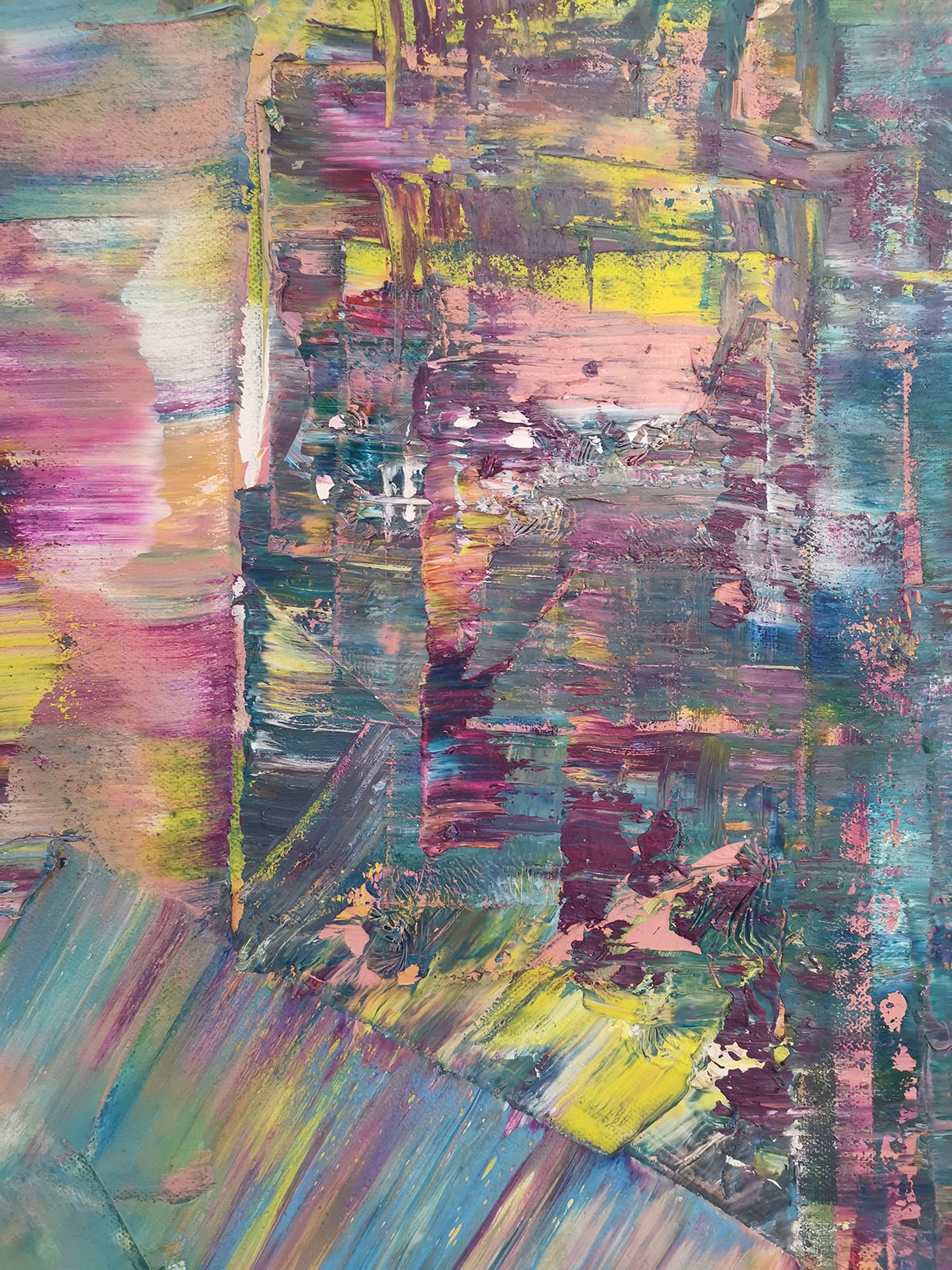
Detail of ‘Lovers’ (2018)
This approach – and the battle between light and dark in human life – will be brought into sharp relief in the new show. The exhibition centrepiece will be an epic work, Tornado of Life (2017), a vivid and exuberant painting around which many other works will be gathered. More guarded and sombre in hue, with just flickers of brighter colours emerging, these paintings serve to emphasise the triumph of light – and indeed of personal enlightenment – that Behnam- Bakhtiar seeks to achieve. Even in the darkest days in Iran, he explains, he drew positives from the friendships that he eventually made there.
Read more: Masseto unveils a new underground wine cellar
“Sassan stands out as a globally educated artist of Iranian background who is bringing works of great relevance to the canon of world art history,” says Samandar Setareh, owner of Setareh Gallery. “By using historic references, as well as a deeply personal and sensitive vision of the human condition, he is formulating a language that is understood beyond any frontier of cultural limitation.” ‘Extremis’ reflects the global appeal of this ethos and art, as well as Behnam-Bakhtiar’s commitment to identifying and developing positive outcomes from seemingly bleak situations. The myriad layers of his textured paintings reflect the very complexity and passage of life itself, a synthesis of practical skill and ingenuity that results in a very special type of art.
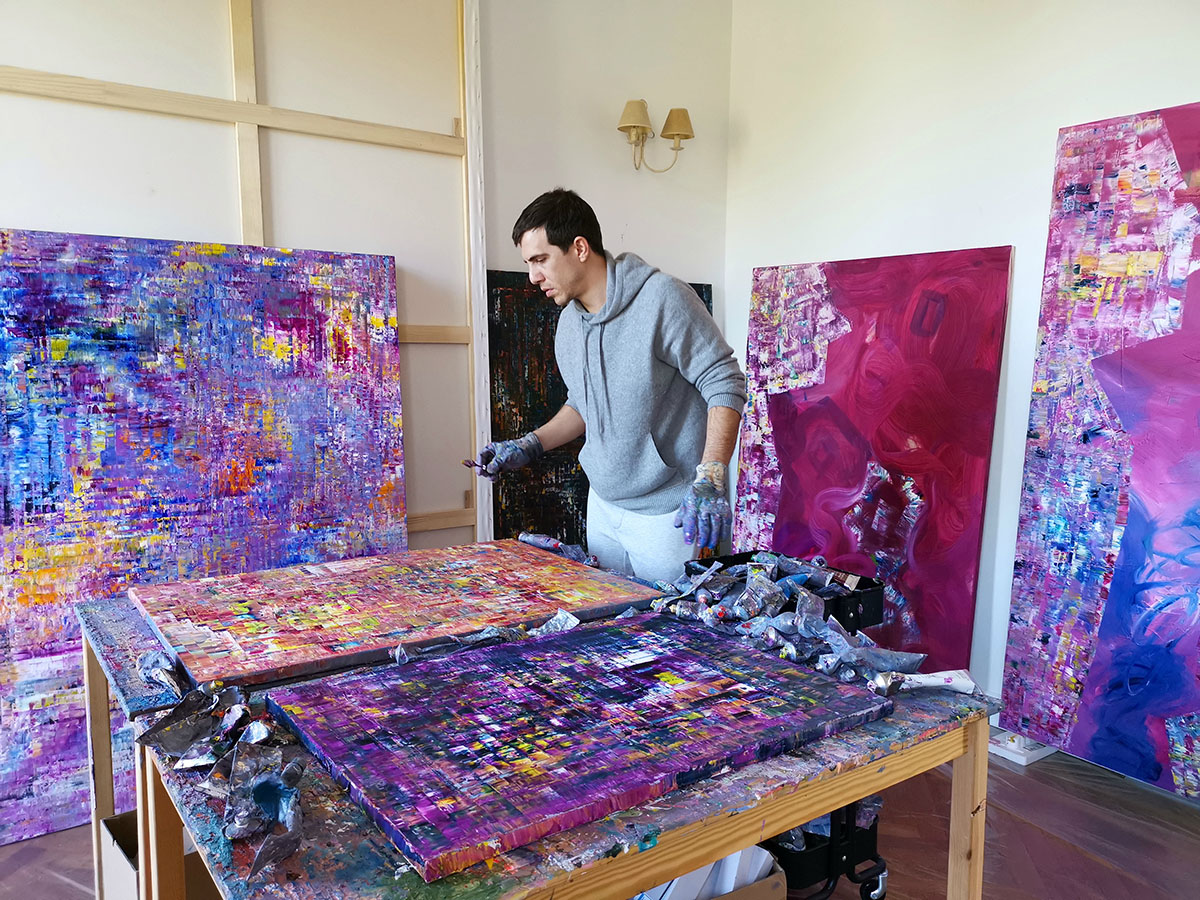
The artist in his studio
Layers of technique
Sassan Behnam-Bakhtiar’s stunning artworks are created by a particular technique that has become his trademark. In much the same way as his life experience is layered and complex, his artworks are similarly intricate. Working in mixed media and oil on canvas, he builds up his paintings through the application of different layers of paint. These can include fragments of handcrafted designs that he attaches to the canvas, collage-style. He overpaints each layer, in some cases working to a grid-like pattern to create a mosaic effect. Finally, he uses a plasterer’s edging trowel to remove sections of the top layers of paint and reveal the colours underneath, resulting in the kaleidoscopic effect for which his works are renowned.
Find out more: sassanbehnambakhtiar.com or setareh-gallery.com
This article was originally published in the Summer 19 Issue.

